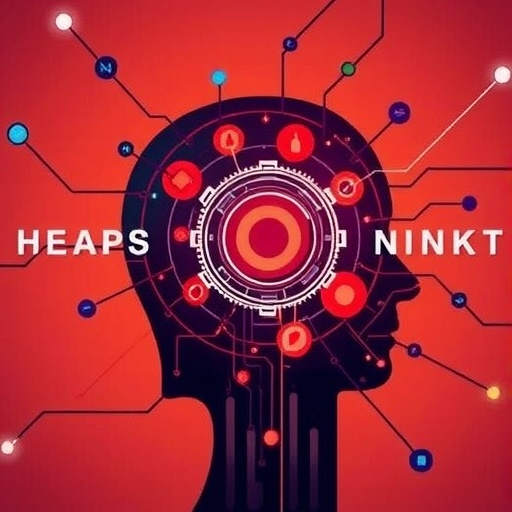In an era where artificial intelligence systems are rapidly advancing, the human capacity for strategic innovation remains a critical element in navigating the complex interplay between human ingenuity and machine intelligence. A recent study by Dattijo and Jo investigates the various ways in which humans can develop and implement strategies that take advantage of the inherent limitations of AI systems. This exploration not only sheds light on the current relationship between AI and human intelligence but also emphasizes the importance of human agency in technology-driven environments.
Artificial intelligence systems, particularly those rooted in machine learning and deep learning, excel in processing vast amounts of data, identifying patterns, and providing predictive analytics. However, these AI models are not without their shortcomings. They often operate within the confines of the data they have been trained on, leading to blind spots and an inability to adapt to novel situations without additional training. Understanding these limitations is essential for humans seeking to leverage AI to their advantage.
Dattijo and Jo propose that strategic innovation is a necessary tool for humans, enabling them to formulate novel approaches that not only complement AI capabilities but also exploit its weaknesses. This innovation requires a deep understanding of both AI systems and human cognition, allowing for the development of hybrid strategies that enhance decision-making processes. The authors argue that rather than perceiving AI as a threat, individuals and organizations should view it as an ally that can be harnessed to amplify human creative potential.
One of the critical aspects of this analysis is the role of human intuition and creativity in addressing the limitations of AI. Unlike AI systems, which rely heavily on data and algorithms, humans possess the ability to think creatively, propose unconventional solutions, and develop innovative strategies on the fly. This unique human trait can be harnessed to outmaneuver AI systems in scenarios where the latter’s programmed responses may fall short or fail to consider unusual variables.
Moreover, the study illustrates how strategic innovation can occur at various levels—individual, organizational, and societal. For instance, individuals can utilize their understanding of AI limitations to refine their problem-solving approaches, while organizations can adopt an innovation-first mindset that encourages collaboration between AI and human teams. This idea can lead to new product developments and service enhancements that directly address consumer needs, reflecting an understanding of both human desires and the gaps left by AI.
In an increasingly automated world, there is an urgent need for educational institutions to prepare future generations for this new landscape. Dattijo and Jo argue that curricula should emphasize interdisciplinary skills that merge technology with creativity and strategic thinking. Preparing students not only to work alongside AI systems but also to identify opportunities for innovation will be crucial in maintaining a competitive edge in the workforce.
The findings of this study carry significant implications for various industries, such as healthcare, finance, and creative sectors. For example, in healthcare, skilled professionals can leverage AI for data analysis while simultaneously applying their medical expertise to identify patient needs that AI alone might overlook. In finance, humans can employ their understanding of market sentiments to devise strategies that AI-driven algorithms cannot anticipate, thereby maximizing investment opportunities.
Furthermore, the research highlights the necessity of ethical considerations in the integration of AI within business processes. As humans innovate strategies around AI, they must be vigilant about bias in AI systems and ensure that their approaches promote fairness and inclusivity. This responsibility can drive industries to create more ethical AI systems, aligning technological growth with societal values.
The journey toward effective human-AI collaboration is not without challenges, however. Resistance to change and fear of obsolescence can hinder the integration of innovative strategies that exploit AI limitations. The authors advocate for a cultural shift within organizations, promoting an environment where experimentation and learning from failure are encouraged. Such a culture will foster resilience and adaptability, allowing teams to evolve alongside advancing technologies.
Dattijo and Jo’s exploration into human strategic innovation against AI systems elucidates the importance of maintaining a human-centric approach in technology. As we stand on the brink of significant transformations fueled by AI, it becomes imperative for individuals and organizations to harness human creativity and strategic acumen to complement and challenge machine intelligence positively.
The potential for such innovation is vast, opening the door to new ways of thinking, working, and living. As we embrace this evolution, striking a balance between leveraging AI’s capabilities and enhancing our human attributes may well define the success of our technological future. In conclusion, the need to cultivate the human spirit within an increasingly AI-driven landscape is not just a matter of survival; it is an opportunity for thriving in a world where strategic innovation becomes the cornerstone of coexistence with intelligent systems.
Subject of Research: Human strategic innovation against AI systems
Article Title: Human strategic innovation against AI systems – analyzing how humans develop and implement novel strategies that exploit AI limitations
Article References:
Dattijo, A., Jo, S. Human strategic innovation against AI systems – analyzing how humans develop and implement novel strategies that exploit AI limitations.
Discov Artif Intell 5, 321 (2025). https://doi.org/10.1007/s44163-025-00439-x
Image Credits: AI Generated
DOI: https://doi.org/10.1007/s44163-025-00439-x
Keywords: Human innovation, artificial intelligence limitations, strategic planning, human-AI collaboration, ethical AI.




